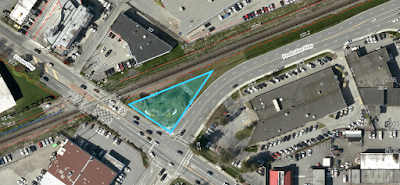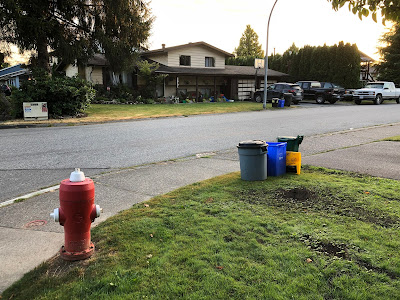One of the top things that Langley City businesses and residents want
addressed is to reduce criminal and negative activity in our community. This
is one of the reasons why the Crime Prevention Task Group was formed in 2017,
and why we have the second highest RCMP member to resident ratio in Metro
Vancouver.
In the fall of 2015, Langley City released the “Community Crime Prevention Strategic Plan.” I previously posted about this plan. One of the objectives of
the plan was to “advocate to senior levels of government to provide the
necessary programs and resources to address justice, crime prevention and
public safety issues.”
As a municipality, there are many things that we can do though we need the
province’s support when it comes to addressing mental health, rent
geared-to-income, and addiction management. The following were the measurable
outcomes from the 2015 plan which required the support of the provincial government.
“Petition the Province and Fraser Health Authority to provide funding for
an Assertive Community Treatment (ACT) Team for the Langleys”
“Petition the Province to provide local access to services for people with
mental illness, and for those with both addictions and mental illness.”
These two requests resulted in an Intensive Case Management (ICM) team for Langley. This team is currently at capacity. City council has requested multiple
times for this team to be expanded.
“Petition the Province to provide funding for a Car 67”
This service provides crisis intervention, risk assessments, and referrals to
individuals. It is a partnership
between Fraser Health and the RCMP. This service is still not available to
Langley residents.
“Petition the Province to amend the Privacy Act to relax requirements for
the implementation of CCTV on public spaces.”
CCTV has been installed in some public spaces in Langley City. CCTV can only
be installed if other crime prevention techniques have failed.
“Petition the Province to implement the recommendations from the recently
completed Prolific Offender Management pilot project to improve approaches
to incarceration and sentencing.”
I do not have an update on this.
“Petition the Province to provide effective drug and alcohol addiction
treatment and recovery programs.”
As part of the opioid crisis response, there are more services available through Fraser Health. More services are still needed.
“Petition the Province to provide funding for youth life skills training
such as conflict resolution, decision making and employment training at
local schools.”
I do not have an update on this.
“Request that the Province install ‘No Panhandling’ signs at major
intersections in the City such as 200th Street and Langley Bypass and Fraser
Highway and Langley Bypass.”
This was completed.
“Petition the Province to reduce the profit margins for methadone
dispensaries.”
I do not have an update on this.
“Petition Fraser Health to provide a psychiatric nurse at the Langley
Memorial Hospital.”
I do not have an update on this.
“Petition the Province to strengthen inter-agency collaboration and
coordination across the wide range of crime prevention and reduction
initiatives.”
As a municipality, we have taken this task on ourself. City staff and council meet with people from Fraser Health, the RCMP, non-profits, and
provincial ministries.
While the provincial government has provided more services to our community,
there are still gaps that need to be filled. Five years later, we still need
more resources from the provincial government to
address getting people support to manage
addiction, improve mental health, and be lifted out of poverty. This is how we reduce the need for people to commit the kinds of negative activity we see in our community.
















